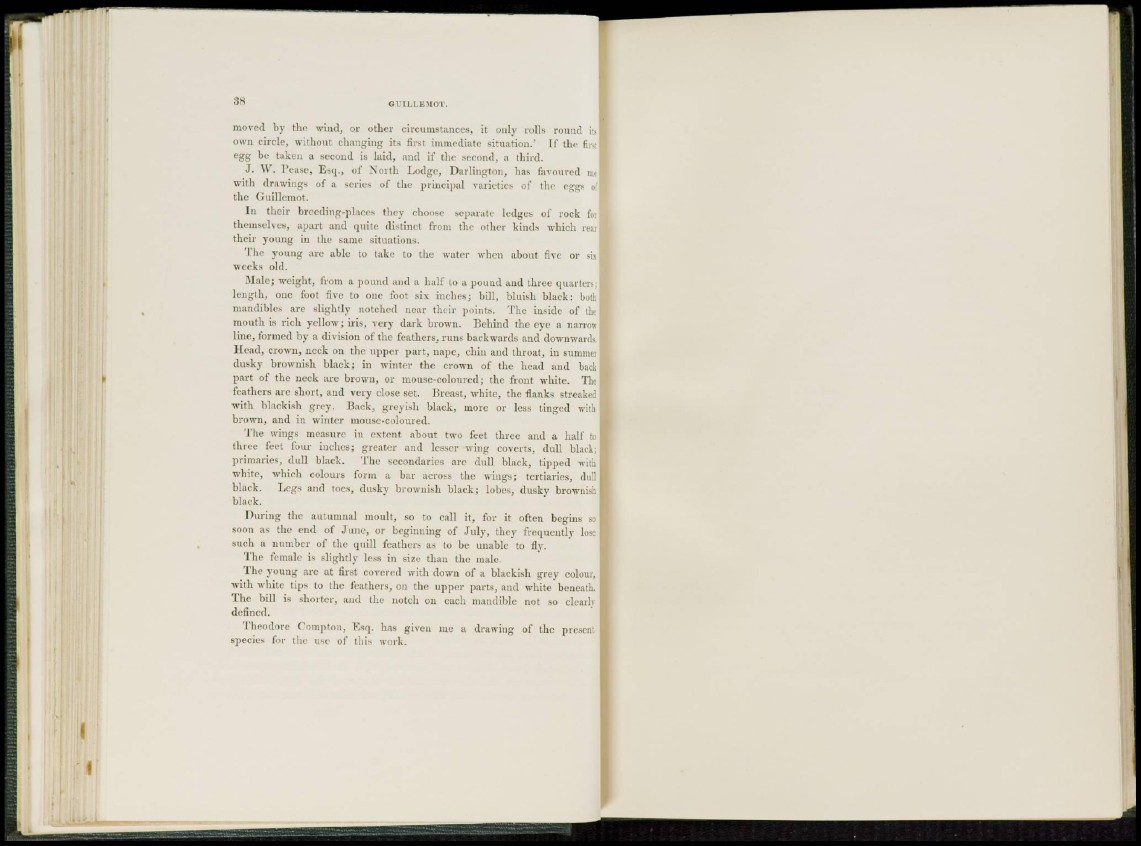
moved by the wind, or other circumstances, it only rolls round itown
circle, without changing its first immediate situation.' If the FIRM
egg be taken a second is laid, and if the second, a third.
J. W. Pease, Esq., of N o r t h Lodge, Darlington, has favoured qh
with drawings of a series of the principa! varieties of the eggs of
t h e Guillemot.
I n their breeding-places they choose separate ledges of rock fi»
themselves, apart and quite distinct from the other kinds which rear
their young in the same situations.
T h e young are able to take to the water when about five or wa
weeks old.
.Male; weight, from a p o u n d and a half to a p o u n d and three quartersj
l e n g t h , one foot five to one foot six inches; bill, bluish black: bott
mandibles are slightly notched near their points. The inside of the
mouth is rich yellow; iris, very dark brown. Behind the eye a narrow
l i n e , formed by a division of the feathers, runs backwards and downward-
H e a d , crown, neck on the u p p e r p a r t , n a p e , chin and throat, in sumnici
dusky brownish black; in winter the crown of the head and bad
part of the neck are brown, or mouse-coloured; the front white. The
feathers are short, and very close set. Breast, white, the flanks streaked
w i t h blackish grey. Back, greyish black, more or less tinged with
brown, and in winter mouse-coloured.
The wings measure in extent about two feet three and a half to
t h r e e feet four inches; greater and lesser wing coverts, dull black;
primaries, dull black. The secondaries arc dull black, tipped with
w h i t e , which colours form a bar across the wiugs; tertiaries, dull
black. Legs and toes, dusky brownish black; lobes, dusky brownish
black.
D u r i n g the autumnal moult, so to call it, for it often begins N
soon as the end of J u n e , or beginning of J u l y , they frequently lose
such a number of the quill feathers as to be unable to fly.
The female is slightly less in size than the male
The y o u n g are at first covered with down of a blackish grey colour,
with white tips to the feathers, on the upper parts, and white beneath.
T h e bill is shorter, and the notch on each mandible not so cleailv
defined.
Theodore Compton, Esq. has given me a drawing of the present
species for the use of this work.